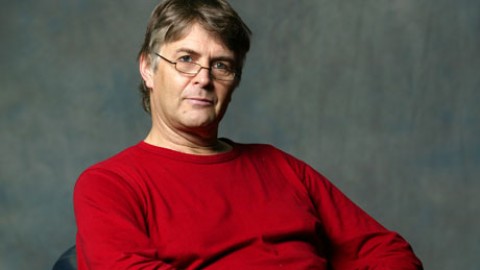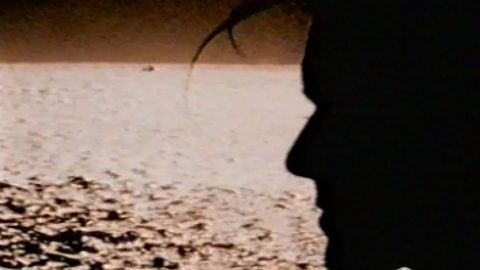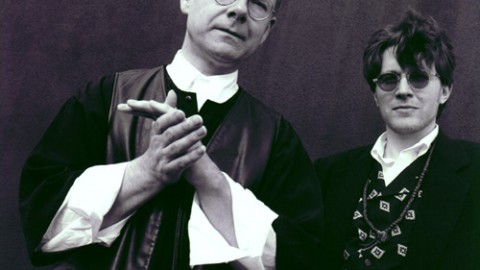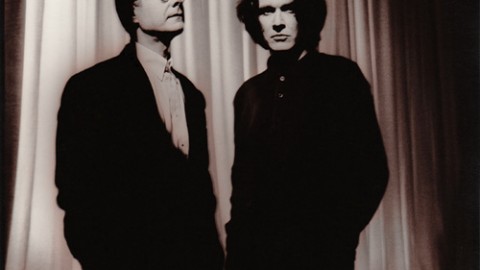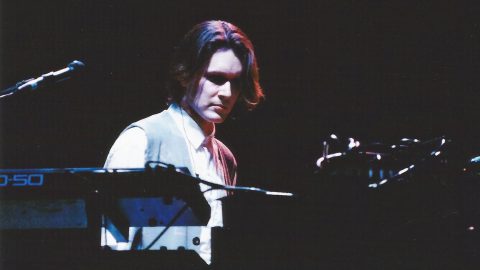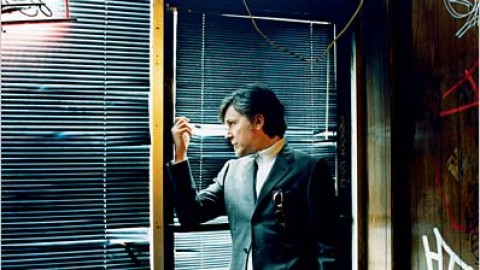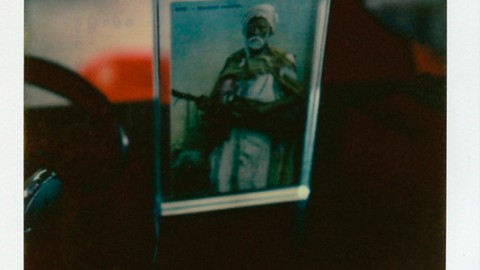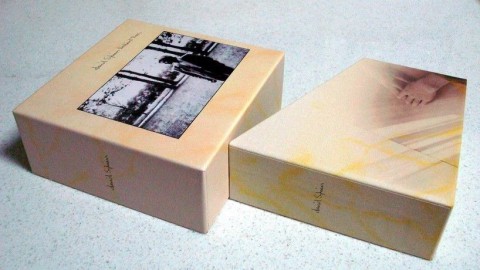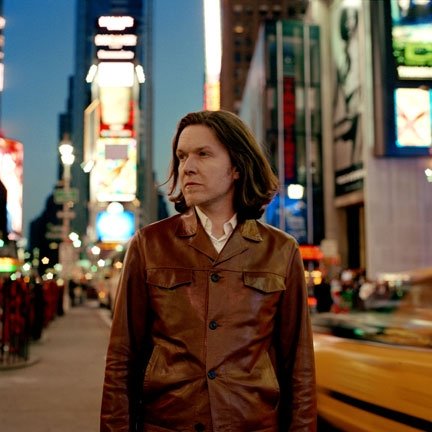
Sylvian fan Nenad Georgievski from Macedonia, was fortunate to make an email-based interview with David Sylvian in 2004. The interview was published in Time Out magazine (Serbia and Montenegro). The published interview was edited and translated.
Nenad Georgievski is a freelance writer who works nowadays for the allaboutjazz site. Read Nenad’s review of The Good Son v.s. The Only Daughter.
2004 Nenad Georgievski and 2005 davidsylvian.net, Nenad Georgievski
Sylvian fan Nenad Georgievski from Macedonia, was fortunate to make an email-based interview with David Sylvian in 2004. The interview was published in Time Out magazine (Serbia and Montenegro). The published interview was edited and translated.
Nenad was kind enough to let davidsylvian.net publish the original, full-length, unedited response of David.
NG: 20 years ago you gave up fame and survived. Although you dont lead the life of a pop star and you keep your private life private you still sell records in huge quantities, the concerts are usually soldout. Can you describe your relationship with your audience? You have quite a few hardcore, loyal fans out there.
DS: I can only deduct certain truths regarding the audience for my work in the same way that anyone else closely observing the situation might. There are a number of travellers who have undertaken the long journey from pop stardom to the present with me. You could say weve been maturing together. You might also be willing to admit that, in their listening habits if in nothing else, they enjoy a good challenge. There are other listeners that tend to jump on and off the wagon when it suits them, possibly tuning in for the vocal work and out for the instrumental (or in some rare instances vice versa). Still others, whose curiosity is piqued by a particular recording. I come face to face with the audience (I wont be presumptuous and call them mine) in the arena of the concert venue. In this respect Ive almost universally found them to be the most generous, respectful, gracious, audience an artist has any reasonable right to expect. More than this I cannot say.
NG:The music you create has a long-lasting beauty and in a way it reflects a lot about you. What would you like people to take away from your music? What sort of response or feeling do you hope is evoked in your listeners?
DS:I have often said that the desire is to blow the listeners hearts wide open. By this I mean I want them to be moved to the point of abandonment. This would be beautiful, an ideal, but it is too much to expect. That the work might resonate in the lives of others is no lesser achievement and one I might more modestly aspire to.
NG: The artwork on you album covers has been like an art gallery exhibition with works by Russell Mills, Anton Corbijn, Yuka Fuji. Being a painter (and photographer) yourself do you think cover art adds anything to the music when it’s released?
DS: The artwork might resonate, enter into dialogue with the music, elucidate possibly? If nothing else it can allude to the contents therein.
NG: Can you describe the intersection where art and music meet for you?
DS: I dont think it is a case of one intersection but many. Simply put, in the realm of the heart or possibly, wherever it pushes up against a truth of sorts.
NG: Can you contrast the creative catharsis of the finished aural product to when you finish a piece of visual art?
DS: I only feel eloquent enough in my work in music to achieve what might be called a state of catharsis. The visual work (such as it is) doesnt function on a comparable level.
NG: Do you believe the evolution of digital music downloads is substantially impacting the perceived importance of album artwork?
DS: Yes of course. But this will change and evolve in ways that will prove interesting and satisfying. I fully expect the visual component to become more elaborate, more an integral element of the entire experience. Once the physical product is all but obsolete we will see dramatic developments in this area. The digital download also does away with the notion of format. As composers we are now at liberty to offer up work that isnt defined by medium, from a piece that lasts literally seconds to one that may run for hours if not indefinitely.
NG: Please, describe the overall approach you took to putting the new record together. If the key elements to DBOAC were Love, devotion and spiritual intoxication it seems that (as stated in other interviews) that the theme subjects are elements that disturb you.
DS: Disillusionment, conflict, isolation, betrayal, even going so far as hatredyou know, the whole trip!
NG: Please describe the conceptual contrasts between Blemish and your other solo releases (Secrets from the Beehive for ex.). To me the stripped sound and the intimacy are on a similar level.
DS: The greatest and most significant contrast might be the approach to the writing and recording of the material. This in effect was a simultaneous act. A series of improvisations performed over a very short space of time which included the writing of the lyric and its performance before the ink was dry. All very much of in and of the moment. Add to this the fact that I was literally, completely alone throughout the entire 6 week session and I think you might begin to comprehend the difference behind the creation of this work when compared with previous projects. Then there was the open-ended form many of the compositions ultimately took. Structurally these are very loose, never amounting to more than two chord changes per composition. Essentially, drone based pieces, which allowed me to work as lyricist and vocalist in a relatively unconstrained fashion.
NG: Blemish was also released on vinyl. Do you have a specific visceral or emotional reaction to vinyl itself?
DS: Other than a simple nostalgia (lacking in sentiment) I cant say that I do.
NG: DBOAC is really an incredibly diverse record. Was it a challenge to make its various influences fit together?
DS: At the time I felt these compositions belonged together. They dealt with similar issues, were created in the same spirit over the same period. There was no shortage of material and in the end the decision as to which pieces should be included in the album appeared obvious to me. Sequencing the album didnt prove an issue either.
NG: Your interest in Eastern culture is well established and evident. Elements of Eastern spirituality are also present in your work. How closely do you identify with those traditions? Also, eastern music – especially from India – seems to be one of the most important influences on you. Which aspect of this music is the most fascinating to you?
DS: Aspects of Hinduism and Buddhism are part of my discipline/practice so inevitably the answer has to be that I identify with these traditions in a fundamental way. I appear to have grown into them over time though, they werent always an entirely comfortable fit but have become more so.
I cant say that eastern music has a particular hold on me. Ive been exposed to a considerable amount of Indian devotional music for the past 9 years or so and that has been absorbed and digested over time. I have enjoyed the living spirit of devotional music (in other words hearing it performed live rather than recorded) and have been incredibly moved by it. However, it would be wrong to say that Im drawn to this, or any music emanating from the East, more so than any other.
NG: How important is spirituality to you and your music?
DS: It cant fail to be anything other than fundamentally important in life and therefore work.
NG: You are heralded for your collaborative work as much as for your solo work? You worked with premier avant/jazz musicians (Czukay, Fripp, Hassel, Ribot, Sakamoto etc). Does working with these gifted musicians grant you a confidence that you can challenge or transcend your own capacity and ability as a composer/arranger?
DS: A challenge is a good thing and something I often request of my collaborators. Ultimately as a composer youre simply trying to do the work justice nothing more. I have been fortunate, as you say, to work with talented musicians but I tend to regard the composition as the benefactor. Im trying to bring it alive, to give it substance. Nothing more.
NG: Your work with Holger Czukay has produced one of the most interesting ambient albums. Was there a concept behind these two albums?
DS: The first of the two albums, Plight and Premonition, wasnt planned so if there was a concept at work it arose during the process of recording the material. Holger had invited me to Kln to record a vocal for a track he was working on but when we arrived at the studio late that first evening something entirely different from what had been expected took place. At the Can studio, as it then existed, there were instruments set up all around the room (an abandoned cinema), I settled down at the harmonium I think it was, and unbeknownst to me Holger put the machines into record and so began the P+P sessions. As the evening went on I recorded a series of improvisations on a number of instruments. It became clear as the work progressed that there should be little in the way of performance, that the work should sound as though itd been captured illicitly while the instruments themselves reverberated in that large room. Holger made a point of recording me in the process of finding myself on any given instrument. At the point that I felt I had developed something worthy of recording, the moment had already passed and wed move on.
NG: Czukay is well known for his improvising abilities. To what degree does improvisation play a role in your compositional process?
DS: It has played a progressively important role for me from Brilliant trees until the present time. The answer to your question regarding Blemish should give you insight as to how this element has become an integral part of the process for me.
NG: How do you look back at the The First Day experience? What are some of the sonic challenges in having to work in this format?
DS: Personally, it was getting my voice to sit well within the context of the guitar heavy music. As you can hear we ended up treating it a fair amount to enable it to rise above the fray to some extent. I left the sessions about one week into the recording as things didnt appear to be working out the way I wouldve liked them. I thought it best to leave Robert alone at the helm for a bit. Two weeks later I returned and a number of basic tracks had been recorded but sonically the sound was incredibly dense with little room for air. This fact was compounded by yet more overdubs on guitar and stick. It took quite some work to sort the material out in the mixing stages. I was still trying to improve upon it in the mastering stage. Never a good sign that!
As for the experience over all: I really enjoyed touring with Robert, thats where the material seemed to come alive. I thoroughly enjoyed my friendship with him. They were difficult times for us both, his presence in my life was benevolent.
NG: Last year there were several reissues of your past solo work as well as some older material with your previous band. The additional material on the reissues is also present on your box set Weather box. Since there was a lot of rumour about the re-release of this box was this the only way to re-release the material from this box?
DS: It isnt true to say that all of the additional material on these re-issues were present in the Weatherbox set. Theres material on the re-issues thats available for the first time. As for the re-release of Weatherbox:; this was something Virgin/EMI where interested in pursuing. I personally never thought it the right thing to do. Fortunately they couldnt find the original artwork so that idea was put to rest. The re-issues were always on the cards independent of the boxed set. In fact Virgin/EMI are still talking over the possibility of creating a new boxed edition
NG: In relation to publishing out of print materials the bootleg community is flooded with these materials be it video or audio. Bands like King Crimson or Led Zeppelin (among others) have been releasing stuff from their archives (live stuff mostly) to prevent this. Do you plan to re-release any past material video/audio/books in near future? (this refers stuff like Preparations, Steel Cathedrals, Trophies Vol.1, Polaroids)
DS: We may release Steel Cathedrals as part of a DVD package at some point. I dont like the idea of being forced to recycle material that has to my mind run its course just because the bootleg community are having a field day with it. I will however pursue bootleggers in an attempt to put an end to their exploitation of my work.
NG: In the forthcoming period youll be touring Japan as part of the Fire in the Forest tour. Do you enjoy the whole rigor of touring? How do you conceive your live performances?
DS: If the company that you keep is good then the touring itself can be a pleasant experience although, having said that, theres no doubt that travel has grown increasingly torturous since 9/11. The conception of any given performance tends to be guided by the audio content of the show. We have to be a little humble in our staging as it isnt easy to break even financially even without elaborate lighting etc etc. so we work within a tightly constrained budget. Right up to the last weeks prior to starting a tour there tends to be questions regarding the feasibility of the enterprise.
NG: You have a new independent label Samadhi. How involved are you in Samadhis day-to-day business?
DS: Currently I am very hands on in every aspect of the business. I am the engine which drives it.
NG: In the forthcoming period youll be releasing albums by Harold Budd and Akira Rabelais. What are the main difficulties that accompany an independent label entirely devoted to experimental music?
DS: Your assumption that the label will be entirely devoted to experimental music isnt correct. Its my intention to release music by artists working in a variety of different genres. The difficulties however tend to be the same regardless of the nature of the work; how do you notify the general public of the works existence and how do you get people interested enough to give it a hour of their time. If we managed to solve those issues to some extent I think wed be doing well.
NG: What is the artistic direction/aim of Samadhi? Is there a musician you would love to have on Samadhi?
DS: Samadhisound is a place both real and virtual for the meeting of minds and shared creativity. It is local and it is global, a breeding ground for ideas and new directions in music and the arts. This is one possible future for the company. I tend to believe that Samadhisound has a life of its own, aspects of which are revealed to me as and when appropriate. I tend to intuit what the next step in its develop might be. I may have a personal preference for the directions it may take but ultimately I try to listen and follow.
There are many wonderfully talented musicians out there but I have no one artist in mind as I write.
NG: You have a significant Internet presence between the David Sylvian and Samadhi websites. How important is the web to the marketing of your music?
DS: It will increase in importance as time goes on. Ultimately, people will be able to purchase downloads of entire albums directly from the site. Obviously, it is already the base of communications between the company and the public, between myself and the public. In many ways this places the site at the heart of the company.
NG: The final question plans for the future?
DS: There are many plans which Id prefer not to go into at this time. We will keep everyone updated via the site as things develop.
2004 Nenad Georgievski published by Time Out magazine (Serbia and Montenegro)
2005 published by davidsylvian.net (April 2005) with kind permission of Nenad Georgievski

